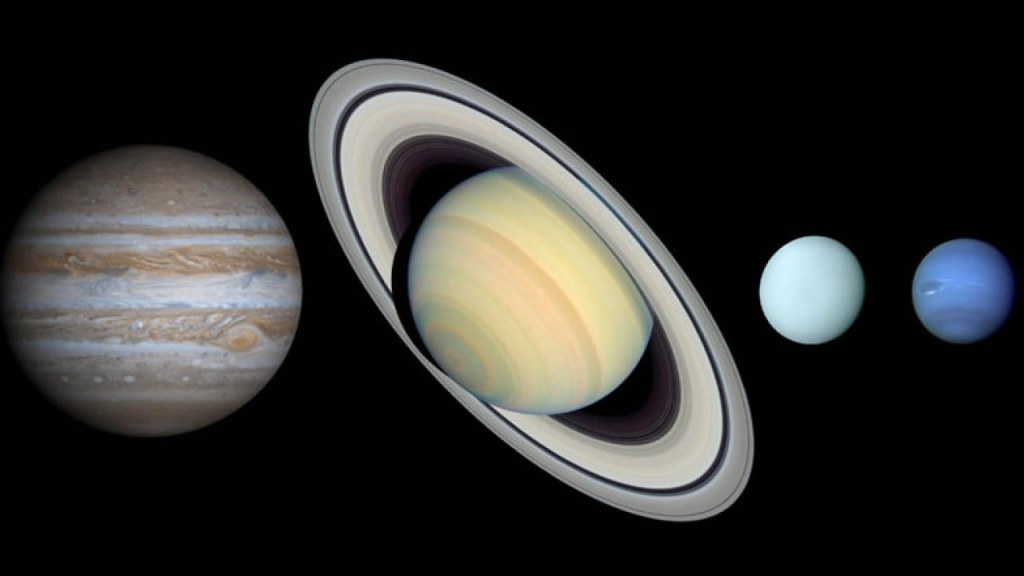Unlocking The Secrets: Discover How The Jovian Planet Interiors Differ And Take Action Now!
How Do the Jovian Planet Interiors Differ?
Introduction
Welcome, Interior Enthusiast, to this informative article about how the interiors of jovian planets differ. The exploration of these gas giants, namely Jupiter and Saturn, has provided scientists with valuable insights into their unique structures. In this article, we will delve into the fascinating details of what makes these planets so distinct from one another, shedding light on their composition, formation, and other intriguing aspects.
3 Picture Gallery: Unlocking The Secrets: Discover How The Jovian Planet Interiors Differ And Take Action Now!



Overview of Jovian Planets
Jovian planets, also known as gas giants, are massive celestial bodies primarily composed of hydrogen and helium. Unlike rocky planets like Earth, jovian planets lack a solid surface and are characterized by thick atmospheres and intense gravitational forces. Jupiter and Saturn are the two largest members of this category, each possessing its own distinctive features.
What Makes Them Different?

Image Source: springernature.com
🔍 Jovian planets differ in several key aspects, such as their composition, size, and internal structure. Let’s explore these differences:
1. Jupiter’s Composition: Jupiter is composed mainly of hydrogen and helium, with traces of other elements. Its core is thought to be a mixture of rock and metals.

Image Source: universetoday.com
2. Saturn’s Composition: Saturn, on the other hand, has a similar composition to Jupiter, with hydrogen and helium dominating its atmosphere. However, Saturn also contains more volatile elements like methane and ammonia.
3. Size: In terms of size, Jupiter is the largest planet in our solar system, with a diameter over 11 times that of Earth. Saturn, although still significantly larger than Earth, is smaller than Jupiter.

Image Source: colorado.edu
4. Internal Structure: Both planets have similar internal structures, with a dense core made up of heavy elements surrounded by layers of metallic hydrogen and molecular hydrogen. However, Jupiter’s core is believed to be larger and denser than Saturn’s.
5. Magnetic Fields: Another notable difference lies in their magnetic fields. Jupiter’s magnetic field is the strongest in the solar system, while Saturn’s magnetic field is comparatively weaker.
6. Atmospheric Features: The atmospheres of these gas giants also differ. Jupiter’s atmosphere exhibits prominent banded patterns and a giant storm known as the Great Red Spot, while Saturn showcases its iconic ring system and a smaller storm called the Great White Spot.
Who Discovered These Differences?
🔍 The differences between the jovian planets were discovered through both ground-based observations and space missions. Astronomers, using powerful telescopes and spectrographs, have been able to analyze the composition and atmospheric properties of these giants. Additionally, spacecraft missions like the Voyager and Cassini-Huygens have provided valuable data through close-up observations of Jupiter and Saturn, including their magnetic fields and internal structures.
When Did Scientists Unravel These Mysteries?
🔍 The exploration of jovian planets and the subsequent understanding of their differences have been ongoing for many decades. Ground-based observations have been conducted since the invention of telescopes. However, significant advancements were made during the 20th century with the launch of space missions like Voyager in 1977 and the Cassini-Huygens mission in 1997. These missions revolutionized our understanding of the jovian planets and allowed scientists to gather detailed information about their interiors.
Where Can We Find Jovian Planets?
🔍 Jovian planets like Jupiter and Saturn can be found in our solar system. Jupiter is the fifth planet from the Sun, while Saturn is the sixth. They are located beyond the asteroid belt, in the outer regions of the solar system.
Why Are These Differences Significant?
🔍 Understanding the differences in the interiors of jovian planets is crucial for advancing our knowledge of planetary formation and evolution. By studying these gas giants, scientists can gain insights into the conditions present during the formation of the solar system and other planetary systems. Additionally, the study of jovian planets helps us better understand the dynamics of atmospheres, magnetic fields, and the overall behavior of celestial bodies under extreme conditions.
How Do These Differences Affect Planetary Exploration?
🔍 The differences in jovian planet interiors have implications for future space missions and planetary exploration. The knowledge gained from studying these gas giants can aid in designing missions and instruments tailored to explore similar environments in other parts of our galaxy. Furthermore, understanding the unique properties and processes occurring within jovian planets can contribute to our search for habitable environments and the potential for extraterrestrial life.
Advantages and Disadvantages of Jovian Planet Interiors
Advantages:
1. Rich Data Source: The unique nature of jovian planet interiors provides scientists with a rich source of data to study and analyze various planetary processes.
2. Insights into Planetary Formation: Studying jovian planet interiors can offer valuable insights into the processes that shape planetary systems, shedding light on how our own solar system formed and evolved.
3. Potential for Discovering Exoplanets: Understanding the variations in jovian planet interiors helps in detecting and characterizing exoplanets with similar compositions.
Disadvantages:
1. Extreme Conditions: The extreme conditions prevailing within jovian planets make it challenging to design instruments capable of withstanding such environments during exploration.
2. Lack of Solid Surfaces: The absence of solid surfaces on jovian planets limits the possibility of landing missions and conducting detailed surface investigations.
3. Limited Human Exploration: Due to the harsh conditions and lack of suitable environments for human habitation, manned missions to jovian planets are currently not feasible.
Frequently Asked Questions
1. Can life exist on jovian planets?
While jovian planets are inhospitable to life as we know it, the study of their environments and composition provides insights into the possibilities of habitable environments on other celestial bodies.
2. Do jovian planets have rocky cores?
Yes, jovian planets like Jupiter and Saturn are believed to have solid cores composed of rock and metal, surrounded by layers of hydrogen and helium.
3. Are the atmospheres of jovian planets stable?
No, the atmospheres of jovian planets are dynamic and exhibit various atmospheric phenomena, such as storms, cloud formations, and changing weather patterns.
4. How do the magnetic fields of jovian planets affect their surroundings?
Jovian planets’ magnetic fields have a significant influence on their surrounding environments, shaping their magnetospheres, interacting with solar winds, and creating auroras.
5. Can jovian planets be used as a potential energy source?
The immense gravitational forces and abundant hydrogen resources present in jovian planets have sparked discussions about the potential for harnessing fusion energy in the future. However, significant technological challenges must be overcome before this becomes a viable option.
Conclusion
In conclusion, the interiors of jovian planets, particularly Jupiter and Saturn, showcase fascinating differences in composition, size, internal structure, magnetic fields, and atmospheric features. The exploration and study of these gas giants provide valuable insights into planetary formation and evolution, as well as aiding in the search for habitable environments beyond our solar system. As we continue to unravel the mysteries of the universe, the knowledge gained from understanding jovian planet interiors will undoubtedly contribute to future advancements in space exploration and our understanding of the cosmos.
Final Remarks
Disclaimer: The information provided in this article is for educational and informational purposes only. While efforts have been made to ensure the accuracy and completeness of the content, it should not be relied upon as a substitute for professional advice or as a basis for any decision-making. Readers are advised to consult with appropriate professionals for any specific questions or concerns they may have.
This post topic: Interiors


